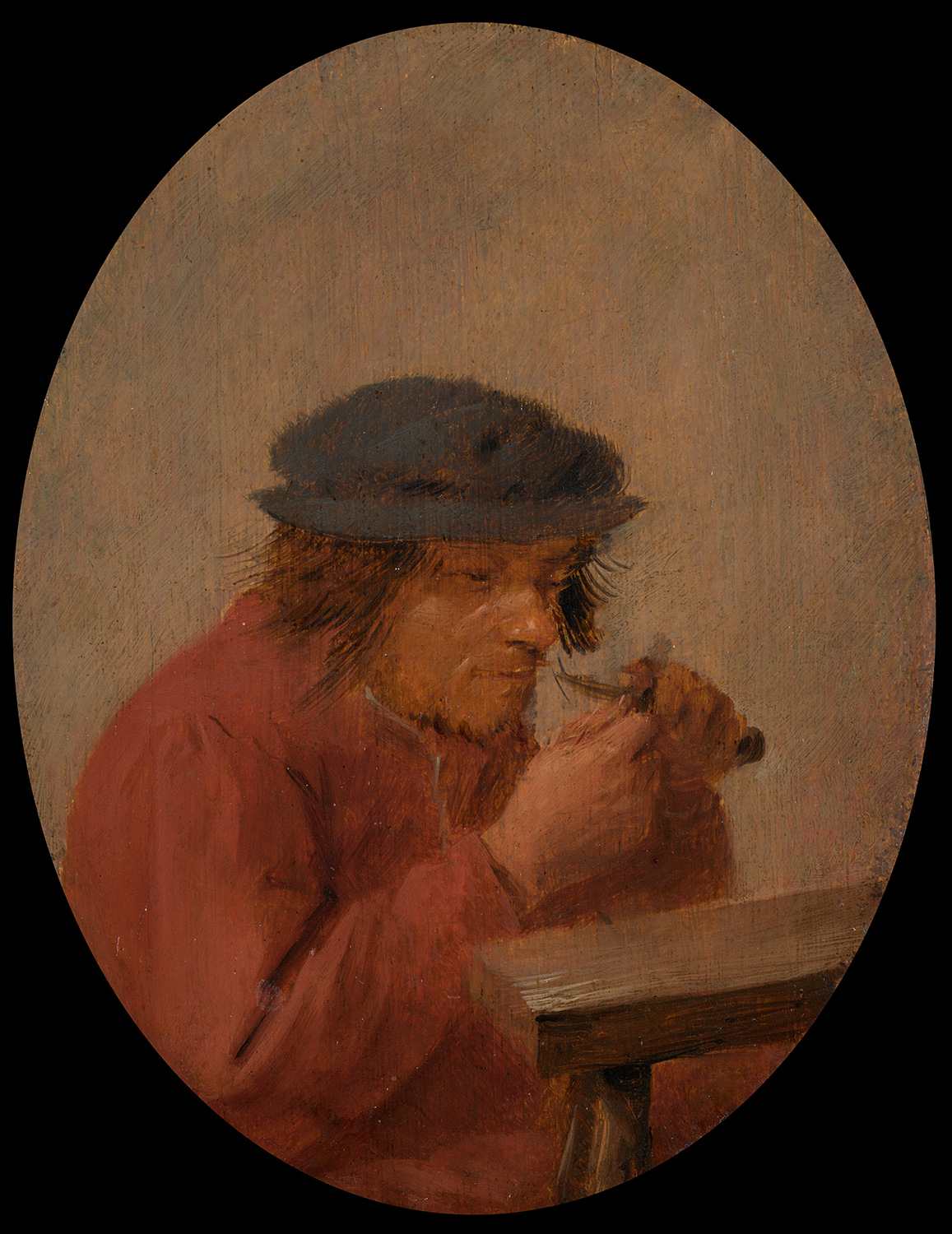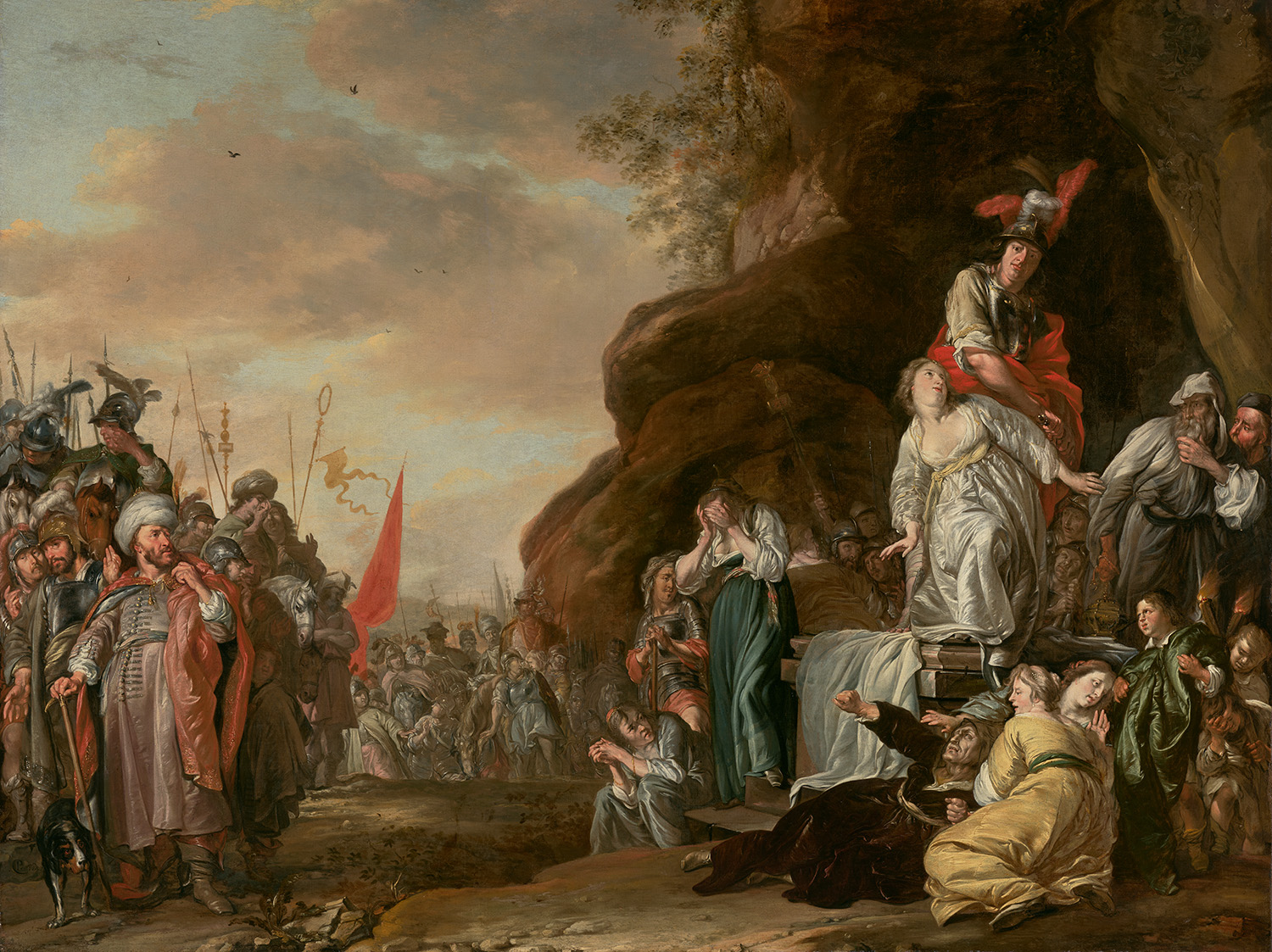It was around 1620 that the painters Gerrit van Honthorst (cat. nos. 27 and 28), Dirck van Baburen (c.1595-1624) and Hendrick ter Brugghen returned to Utrecht after a long sojourn in Italy. Almost immediately they introduced a number of important innovations that were destined to change the face of northern Netherlandish painting. While in Rome, the trio had come under the influence of the art of Caravaggio, characterised by its abundant use of chiaroscuro, a highly realistic approach to the stories of the Bible, and figures that occupy the entire picture plane. In the work of Caravaggio and his followers one often finds such figures in the form of single, half-length musicians.
The Utrecht caravaggisti painted both biblical and genre scenes, but it was their pictures of these music-makers that enjoyed the greatest popularity with the buying public. Even today it is the motif most closely associated with the art of Utrecht.1 Ter Brugghen executed his first half-length musician in 1621. The Singing lute player described here was done several years later, probably in or around 1624. It depicts a singing man, accompanying himself on the lute. He gazes out at the viewer, wearing a lively and open expression. The lighting is subtle and convincing, and helps underline the powerful modelling of the figure. Its rich, beautifully preserved colouration is undoubtedly one of the most attractive aspects of the painting: black and red in the jacket, blue and yellow in the legs of the trunkhose, and bright white and blue in the sleeves of the shirt. Ter Brugghen separates these colour accents with a neutral brown, used for the cloak and lute. The man’s flamboyant costume, with its capacious puffed-sleeve shirt, cloak and feathered beret, is certainly not something meant to be worn on a daily basis.
It has been suggested that Ter Brugghen, in imitation of his Italian predecessors, dressed his figures in this way in order to distance them – and thus the scene as a whole – from everyday life, giving the scene an exotic or fantastic tinge that enabled it to be ‘read’ differently and to take on a new meaning.2 However, although the lute may well be a symbolic reference to love – it had been considered the perfect wooing instrument since the Middle Ages – there is nothing else in the picture to necessarily point in this particular direction.
The painting is neither signed nor dated, although there is a more or less identical composition – bearing the mark HTBrugghen fecit 1624 – in the National Gallery in London (fig. 1). It is not unusual to find several versions of the same scene in Ter Brugghen’s work,3 no doubt a result of the enormous popularity of his musician figures. These replicas are sometimes by his own hand, but often an obvious variation in quality indicates that the copy was made by a member of his workshop. In this case, however, there is almost no difference to the picture in London. The execution is identical and in both the paint is applied with great self-assurance. This, added to the fact that the London work is signed and the painting here is not, suggests that our Singing lute player is an autograph repetition of the original in the National Gallery.
Another indication of the work’s replica status is the lack of pentimenti – of which there are many in the London picture.4 Particularly along the right-hand edge of the hat and in the right sleeve we find clear evidence of adjustments having taken place during the painting process. There are no such changes in our example. The painter had the desired end result – probably literally – right in front of him.
There is one detail in this work that has been preserved in a more original form than in the London painting, namely the blue stripe in the white puffed sleeve. In the prime version, the addition of smalt to the blue paint has caused it to become more transparent and to discolour over time.5 In our Singing lute player, however, this area has kept its original freshness and richness of contrast.

